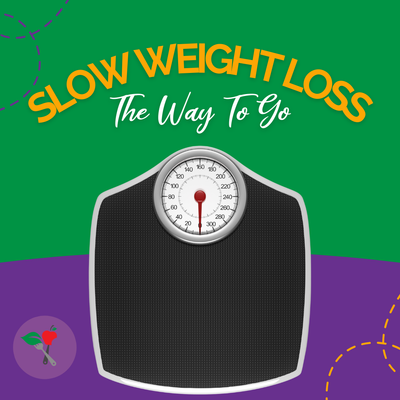The Concerning State of Childhood Obesity
Childhood obesity has become a serious problem in America and has hit an all-time high according to a new survey. While many of us have been aware of this growing health issue for children for some time, the problem does not seem to be improving. New data reveals that 19.3% of children and adolescents in the U.S. are obese – a record high, according to the latest data from the National Health and Nutrition Examination Survey
Overweight and obesity in youth puts children at risk for many health problems including high blood pressure, high cholesterol, impaired glucose tolerance, breathing problems, joint issues, fatty liver disease, gallstones, and acid reflux. This, in turn, increases their chances of developing type 2 diabetes, cardiovascular disease, certain cancers, and other serious health conditions. In a sample of children aged 5-17 years old, 70% of obese children had at least one risk factor for cardiovascular disease, while 39% had two or more risk factors.
Childhood obesity is also related to anxiety, depression, low self-esteem, lower self-reported quality of life, and bullying. Since eating and activity habits established in childhood often carry over to adulthood, kids with obesity are more likely to continue to struggle with their weight into adulthood unless there is a commitment to make healthy changes.
The latest report includes data from 2017-2018 with a survey size of about 10,000 kids. The highest rates were among children ages 12-19, with 21.2% of them falling into the obese category, followed by children ages 6-11 with 20.3% and 13.4% of those ages 2-5 years old. Obesity in children is defined as having a BMI-for-age over the 95% percentile on the growth charts. Severe obesity is BMI at or above 120% of the 95 th percentile, an estimated 6.1% of children and adolescents met this category.
Certain groups had higher rates than others. Boys were more likely to be obese than girls and rates were highest in Black and Hispanic youth. The rates have increased 2.5% over the last decade and 5.4% over the last 20 years, showing that it has been on an uphill pattern even with the campaigns to improve children’s diet at school and to bring awareness to the problem. If we continue on this path 1 in 4 children will be obese over the next 20 years and our country’s health will suffer and medical costs will skyrocket!
Many factors play into the causes of excess weight gain among children including behavior, environment, access to healthy food, and genetics. Not getting enough exercise and spending too much time behind a screen can lead to weight gain. Sleep and stress can also play a role. Balancing the number of calories consumed from foods and drinks with activity plays an important role in maintaining a healthy weight.
It is likely that the ongoing COVID pandemic will likely exacerbate many of these issues. With parents out of work, no recess or gym class at school, many activities canceled, increased sedentary activities, and heightened stress levels have all led to an increase in unhealthy behaviors. The pandemic has impacted resources for healthy food, emotional eating, and our food behavior. Parents have been handed of heavy load with virtual schooling, working from home while maintaining the household, plus financial stress. This has led to parents possibly having less time to cook and prepare healthy meals leaving children in charge of preparing their own snacks and eating unsupervised.
A survey of 318 parents of children ages 2-12 across the United States found that parents reported increased use of food to manage children’s emotions. For example, using less healthy foods, such as cookies, to reward their children. Stress related to COVID-19 was associated with children eating more snacks throughout the day. Also, the extra time at home meant more time to graze and less time to be active.
In contrast, the study did reveal some positive changes that have occurred during the pandemic in family eating behaviors. The researchers reported that 75% of families had regular meal times and routines daily. Parents also had more interaction with children while they were eating, whether eating with their kids or engaging with them in some way during meals. This type of behavior has been associated with positive food behavior in the past such as children learning basic cooking skills. Research has highlighted many advantages of having meals together as a family such as reduced weight, more likely to eat healthy foods, better academic performance, and improve emotional and behavioral health.
The best way to address this trend is to improve our healthy behaviors as a whole. Singling out a child for their weight is not productive and does not lead to lasting change. And placing a child on a diet is not recommended without the consultation of a health care provider. Often, the goal is to reduce the rate of weight gain while allowing normal growth and development. A diet that’s too restrictive, including too few calories, may not supply the energy and nutrients a child needs and can trigger overeating or secretive eating if he or she feels too deprived. Working together as a family, everyone can benefit! Let’s review some tips to help support a healthy weight in kids.
FOCUS ON OVERALL GOOD NUTRITION
Children should be offered a balanced diet featuring all of the food groups. Eliminating certain food groups or severely restricting certain items could lead to growth and development problems and set them up for long-term disordered eating.
Include plenty of fruits, vegetables, and whole grains. A study from 2017 by the CDC revealed that only 7.1% of high school students met the recommended intake of fruits and only 2% met the recommended intake for vegetables! Whole foods provide fiber, important vitamins and minerals, and because of their high water content tend to help you feel more satisfied and control hunger. Place healthy foods in easy-to-grab areas. If your child sees these items more often and it is simple for them to get it themselves, it is more likely that he or she will eat them.
Swap out caloric beverages such as sodas and fruit drinks for water and low-fat dairy products. Choose lean meats, poultry, fish, and beans for protein to help reduce saturated fats. Let treats be treats! Foods that are high in fat and sugar should be limited, not a daily occurrence. Buy these items less frequently and choose healthy snacks such as a piece of fruit with nut butter, low-fat yogurt, or homemade trail mix.
MAKE PHYSICAL ACTIVITY ROUTINE
The Physical Activity Guidelines for Americans recommends children aged 6-17 years old do at least 60 minutes of moderate to vigorous physical activity every day. The benefits of regular movement for kids go beyond promoting a healthy weight. It can help increase bone strength, reduce stress and anxiety, decrease blood pressure, and increase their self-esteem.
Children thrive on routine. By making movement a regular part of your day, you will help them build a positive relationship with exercise and also get them in the habit of being active, rather than sitting on the couch. Take an evening walk after dinner. Start riding your bike to visit their grandparents every weekend. Pick an active game to play a few times a week as a family, such as hide and seek or basketball. Find activities they enjoy. Sometimes this one takes time, you may have to try out a few different options before they find an activity they want to participate in. If your child enjoys it, they will be more likely to stick to it long-term and spend more time practicing.
BE A ROLE MODEL
It is important to keep in mind that children often imitate adults. If your children see you eating healthy foods and exercising regularly, they will likely follow suit. If you are aiming for them to make a positive change while you are spending hours playing on the computer and eating junk food, it likely will not create a lasting change in your child and will most likely cause a lot of friction between the two of you. Invite your child to join you on a hike or to a yoga class. Offer them a glass of the healthy smoothie you whipped up for yourself. If they see you doing it, it will feel less scary for them and also help them feel more out of the spotlight.
Be mindful of fad diets and negative self-talk around your child too. Following a restrictive diet or unhealthy fad may teach your child unhealthy behaviors such as ignoring body cues, setting up unrealistic expectations, confusing health information, and set them up for yo-yo dieting and unhealthy weight fluctuations. By focusing on a well-rounded, balanced diet you will teach your child the importance of listening to their body, feeding it right, and making changes for the long-term. Labeling foods as “good” or “bad” and talking negatively about your body and others’ bodies can lead to children internalizing these messages and for them to think and say similar things about themselves.
ENCOURAGE HEALTHY COPING AND SLEEP BEHAVIORS
Stress can impact eating and physical activity patterns, as
well as hormones that regulate our hunger. Leptin is a hormone secreted by fat
cells which helps to control hunger and increase our metabolism.
Increased leptin is associated with obesity in adults and children. Leptin is secreted in
response to stress and when you do not get enough sleep. Prioritizing sleep is
important for all of us to help us better cope with daily stressors and has a
very important role in maintaining a healthy weight.
...
The American Academy of Sleep Medicine (AASM) advises:
| Age | Amount of Sleep |
| 3-5 years old | 10-13 hours daily |
| 6-12 years old | 9-12 hours daily |
| 13-18 years old | 8-10 hours daily |
...
Stress-eating and eating when not physically hungry is an unhealthy coping skill that can last into adulthood. Teaching children ways to properly deal with stress and cope with tough emotions is an important life skill. One study found that a high level of perceived stress in adolescents was associated with a greater waist circumference and BMI. Some of the behaviors we have already touched on including physical activity and family meals are a good way to deal with stress and to connect. Establishing predictable routines is another way to help children adjust when times are uncertain. It is important to avoid using food as a reward or as a way to cheer up your child. This teaches your child to associate food with emotions or to use it as a coping mechanism.
Focusing on simple measures to help kids eat healthier, move more, and support their emotional health are all important parts of reversing the current path of childhood obesity. While we still do not know the impact of the COVID pandemic on our children’s health, it is important for all of us to make healthy changes that last. Start with having more meals together as a family. Commit to purchasing more fruits and vegetables and fewer treats. Make water the drink of choice. Find activities to get the whole family moving and put the screens down. Together we can make a difference and we will all be better in the end!
Interested in eating healthy? Hungry for more?









 Weight Loss
Weight Loss Health & Wellness
Health & Wellness Diabetes
Diabetes Heart Health
Heart Health Motherhood & Family
Motherhood & Family Dietary Restriction
Dietary Restriction Other Health Conditions
Other Health Conditions About SSHE
About SSHE


